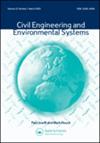地震灾害下学校的最佳改造方案及风险评估
IF 1.1
3区 工程技术
Q3 ENGINEERING, CIVIL
引用次数: 3
摘要
摘要:本文运用风险评估和可靠性评估技术,提出了一种选择地震灾害下受损学校最优改造策略的公式。该公式考虑了替代改造策略的成本效益,包括失效后果,以在成本和可靠性收益之间获得充分的平衡(CE:平衡是一个不可数名词)。建议的备选方案应产生低于目标值的失效概率,该目标值通过最小化预期生命周期成本的现值来获得。失败的后果包括潜在的生命损失、人身伤害、校外复课费用和内容的丢失/损坏。考虑的极限状态是超过剪力和弯矩能力以及允许的层间位移。提出了成本与可靠性增量之间的关系,并对其进行了校正;应用MCS计算失效概率。两层建筑的一个例子是位于特拉斯卡拉州的一所学校;在这种情况下,目标失效概率为1.6 × 10−4。最优改造策略是与最小预期生命周期成本相对应的策略。该提案可以为地震灾害下的学校提供基于风险、可靠性和弹性的改造建议。本文章由计算机程序翻译,如有差异,请以英文原文为准。
Optimal retrofit for a school under seismic hazard including risk assessment
ABSTRACT The paper proposes a formulation to select the optimal retrofit strategy for a damaged school under seismic hazard, by applying risk and reliability assessment techniques. The formulation considers the cost-effectiveness of alternative retrofit strategies, including failure consequences, to get adequate balance (CE: Balance is an uncountable noun) between the costs and the gains on reliability. The proposed alternatives should produce a failure probability below the target value, which is obtained by minimising the present value of the expected life-cycle cost. The failure consequences include the potential life loss, injuries, expenditures due to off-campus resumption of classes and loss/damage of contents. Exceedance of the shear force and bending moment capacities and the allowable inter-story drift are the considered limit states. A relationship between the cost and the increment on reliability is proposed and calibrated for the case study; MCS is applied to calculate the failure probabilities. An example of a two-story building is a school located in the Tlaxcala State; for this case, the target failure probability is 1.6 × 10−4. The optimal retrofit strategy is the one that corresponds to the minimum expected life-cycle cost. The proposal may serve to generate risk, reliability and resilience-based retrofit recommendations for schools under seismic hazard.
求助全文
通过发布文献求助,成功后即可免费获取论文全文。
去求助
来源期刊

Civil Engineering and Environmental Systems
工程技术-工程:土木
CiteScore
3.30
自引率
16.70%
发文量
10
审稿时长
>12 weeks
期刊介绍:
Civil Engineering and Environmental Systems is devoted to the advancement of systems thinking and systems techniques throughout systems engineering, environmental engineering decision-making, and engineering management. We do this by publishing the practical applications and developments of "hard" and "soft" systems techniques and thinking.
Submissions that allow for better analysis of civil engineering and environmental systems might look at:
-Civil Engineering optimization
-Risk assessment in engineering
-Civil engineering decision analysis
-System identification in engineering
-Civil engineering numerical simulation
-Uncertainty modelling in engineering
-Qualitative modelling of complex engineering systems
 求助内容:
求助内容: 应助结果提醒方式:
应助结果提醒方式:


